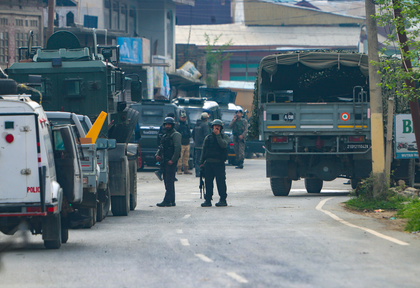AI and the new doctrine: How India is rewriting its security playbook after Pahalgam
By IANS | Updated: October 9, 2025 14:25 IST2025-10-09T14:22:14+5:302025-10-09T14:25:12+5:30
New Delhi, Oct 9 The Pahalgam attack was a major learning curve for the security agencies in India. ...

AI and the new doctrine: How India is rewriting its security playbook after Pahalgam
New Delhi, Oct 9 The Pahalgam attack was a major learning curve for the security agencies in India. While the military doctrine changed following the attack that claimed 26 innocent lives, the strategy, too, is evolving from response to prediction.
In Jammu and Kashmir, life has started to look up. There was peace, and tourism was booming. In hindsight, this was also a ploy by Pakistan to lure the Indian agencies into believing that peace had been completely restored in the Valley.
The idea was to catch the agencies off guard and then carry out a big strike. This event in cybersecurity is known as a Zero-Day event, whereby an unknown vulnerability is exploited by the attackers.
The ISI had told its terror groups to remain dormant and lure the security agencies to believe that all is well. Post the Pahalgam attack, India’s response was solid. The Indian armed forces undertook Operation Sindoor, which exposed to the world Pakistan’s every vulnerability. Terror camps, headquarters, training facilities, and terrorists were precisely hit by the armed forces both in Pakistan and Pakistan-occupied Kashmir (PoK).
Under Prime Minister Narendra Modi’s leadership, the military doctrine had changed, whereby a terror attack would be treated as an act of war and not cross-border terrorism. The national security planners took note of the Pahalgam attack and, apart from changing the doctrine, also began working on a security plan that would be more about prediction rather than just being responsive.
An official said that a national security policy keeps evolving according to the new threats. We cannot have just one single policy and treat every incident as the same. The leadership has realised that to deal with terror attacks, newer methods have to be put in place, and the strategy needs to keep evolving according to the situation.
While agencies such as the Intelligence Bureau and Research and Analysis Wing respond to threats, they would now also look for them. This would mean stopping the threat before a strike takes place.
Intelligence agencies from across the world have been flagging a threat wherein terrorists have started relying more on Artificial Intelligence (AI). At first, it was found that these elements were using AI only to create propaganda material, such as text and videos. Now, they are using AI to assess the strength of the military and also learn more about the strategies that a country is using to fight against them.
India’s national security planners have now started to invest heavily in AI to fight the menace. The use of technology would ensure that they can predict a threat more proactively, rather than just react to one. AI would be used to analyse phone metadata, online communication, suspicious behaviour, and satellite imagery.
The use of such technology would help the Indian security agencies assess threats and ensure that vulnerable places can be guarded better. For instance, picking up Intelligence in Pahalgam was hard. Pahalgam can be accessed only on foot or on horseback.
Further, there are dense jungles surrounding the place, and this makes it a perfect spot for terrorists to strike. To take the implementation of AI in national security forward, India will use its pool of resources, such as engineers and the DRDO. AI would be used for facial recognition, drone surveillance, predictive modeling, and the use of thermal and radar-based AI systems to secure the border.
AI would come in handy to counter the AI that the terror groups, such as the Islamic State and Al Qaeda, are already using.
An Intelligence Bureau official says that the propaganda material has shot up multifold on social media. There are AI-generated videos that are in circulation. Further, AI is being used to cater to every person in every region in India.
This means that these groups are preparing AI-generated videos and then using the same technology to translate them into every Indian language. This helps them reach a much larger audience, and hence, the possibility of recruitment becomes higher.
To counter this, the Indian agencies would use AI to monitor both the social media and the dark web. AI will help the agencies find coded language being used by terror groups. Finding these codes will help in learning about the radicalisation narrative and also the recruitment strategy by terror groups.
Disclaimer: This post has been auto-published from an agency feed without any modifications to the text and has not been reviewed by an editor
Open in app